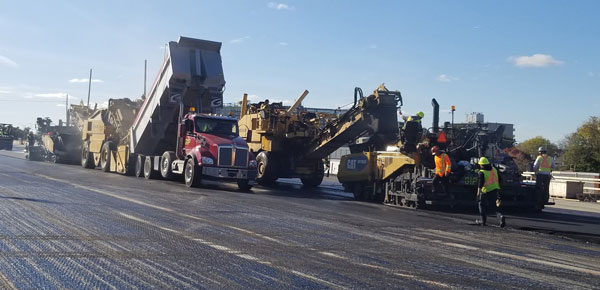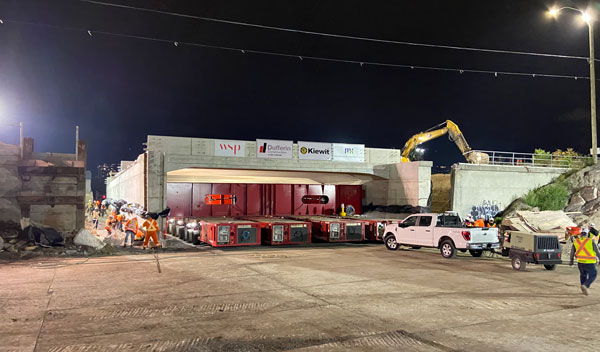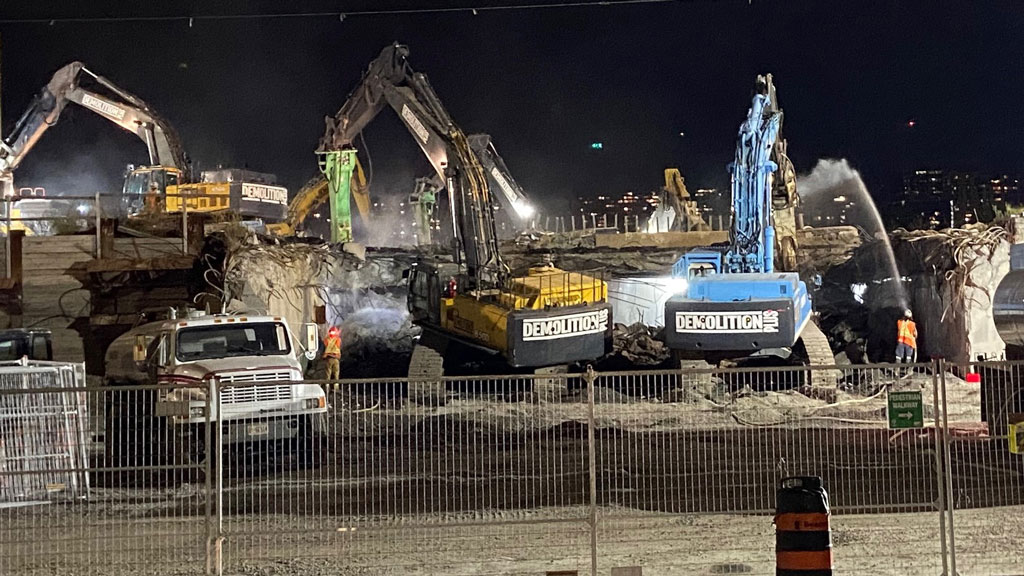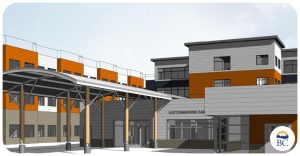After 16 years of overseeing over a dozen rapid bridge replacement projects across Ontario, the jobs are still challenging and fascinating, says a veteran Ministry of Transportation (MTO) manager.
The MTO and its contracting partner, the Kiewit-Dufferin Midtown Partnership (KDMTP), successfully pulled off a three-day demolition and reconstruction of the Percy Street Bridge over the Queensway in Ottawa last month, with a new two-span structure successfully installed and ready for traffic early in the morning of Oct. 24.
Frank Vanderlaan, MTO’s area manager of highway engineering, said the Percy Street job went according to plan despite recent heavy rains and the unique challenges associated with building on piles as opposed to solid rock.
“The rain slowed the contractor down but they were still able to open up the bridges well before the 6 a.m. Tuesday morning deadline,” said Vanderlaan. “So it was definitely a success.
“It never really becomes old hat. Each bridge is a project on its own for sure.”

Percy Street is part of a $180-million, five-site bundled contract collectively called the Midtown Bridge Replacement Project. The MTO started working with KDMTP over five years ago with procurement under a construction manager/general contractor model.
“When we started the design process for this project…we actually had the contractor on board to be part of the whole design process,” Vanderlaan explained. “Normally in a design-bid-build you design projects and you tender it and the contractor bids on it and gets the job. But in this case they were involved right from the get-go.”
The bridges to be replaced at the five sites were all about 50 to 60 years old, Vanderlaan said, and had reached the end of their useful life.
Last year the contractor completed the Rochester Street and Booth Street bridges; the Bronson Street and now Percy Street overpasses have been completed in 2023; and next year will be the Crescent Street bridge replacement. All are rapid replacement jobs, each with two new spans installed.
“Obviously there are savings in procurement,” said Vanderlaan of the bundling. “It’s a huge project. The more bridges you have, the bigger it gets. And it’s not only the bridges, it’s also the highway reconstruction, the noise barrier replacements and so on.”
The partners opted to erect rigid frame bridges, a switch from the thin slab used in earlier MTO rapid bridge jobs.

The frames were installed using a self-propelled modular transporter (SPMT), a platform with a large array of wheels that turn in all directions, controlled by a manual joystick-type panel.
“It’s quite impressive, really,” said Vanderlaan of the SPMT. “They basically have a vertical shaft and it allows each one of those wheels to rotate 360 degrees and then you have so many of them.”
Rigid frame jobs generally take up to 84 hours, Vanderlaan said, noting it is a relatively newer technique.
With a rapid project like Percy Street, the rigid frames are constructed months before the selected installation date at a nearby lay-by site.
The materials have evolved over the years that the MTO has been overseeing the rapid bridge jobs, Vanderlaan said, with some stainless steel now used and high-strength concrete. The bridges are expected to last 75 years.
At the height of the three days, there were approximately 100 construction workers and support people onsite involved in the operation, including a significant police presence.
The roadway is typically shut down at 8 p.m. to kick off the construction blitz and crews begin the excavation of the highway leading up to the bridges on both sides while heavy equipment including mechanical shears and jackhammers are moved in to start the demolition of the old bridge. There is a constant flow of vehicles as rubble is cleared away.
The SPMTs then transport the rigid frames from the staging area to the receiving foundations, with backfilling constantly taking place.
Rebuilding the highway is the most time-consuming part of the job, Vanderlaan said. The backfill is compacted and the surfaces paved including the new bridges. Then the pavement markings are painted.
Besides the other challenges such as dealing with the piles, the presence of a major watermain required logistical ingenuity.
“There’s a huge watermain underneath the adjacent street, and this watermain could not be driven over essentially without real extensive protection,” Vanderlaan said. “So to be able to avoid that one watermain altogether and still being able to manoeuvre these bridges was key to the success of this bridge.”
Follow the author on X/Twitter @DonWall_DCN.











Recent Comments
comments for this post are closed